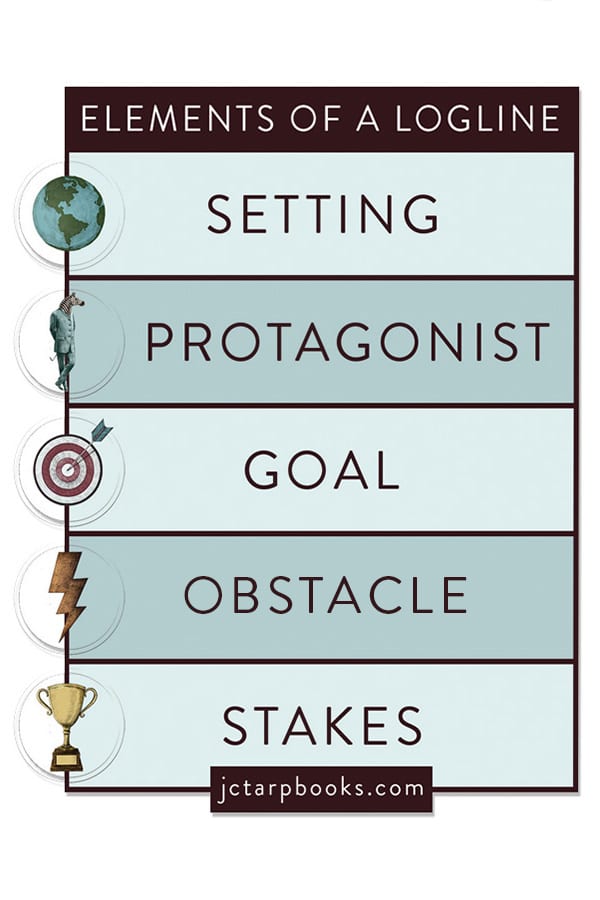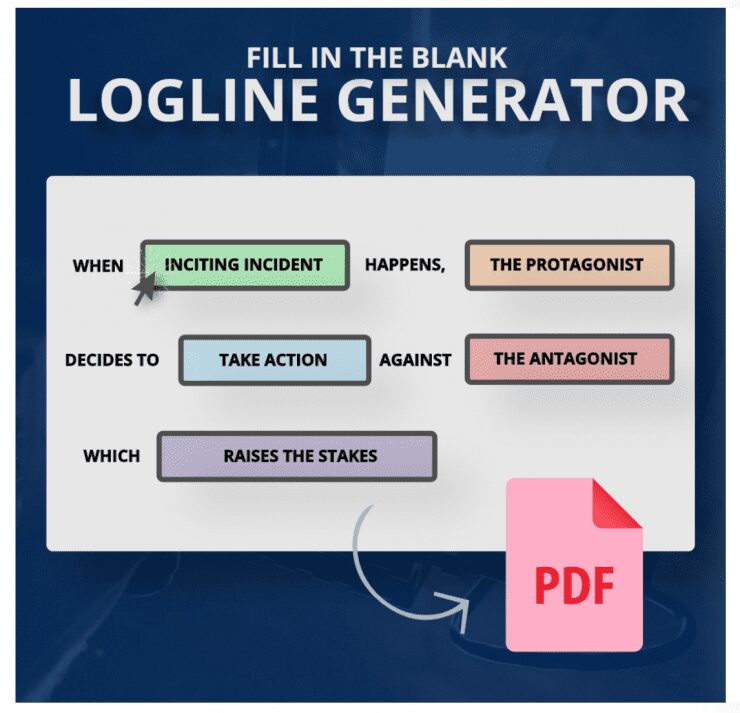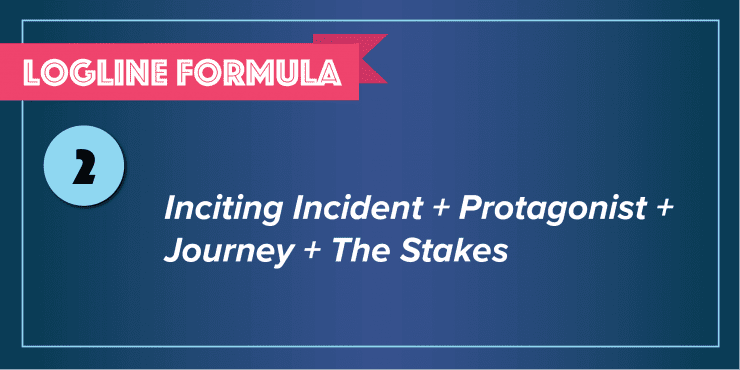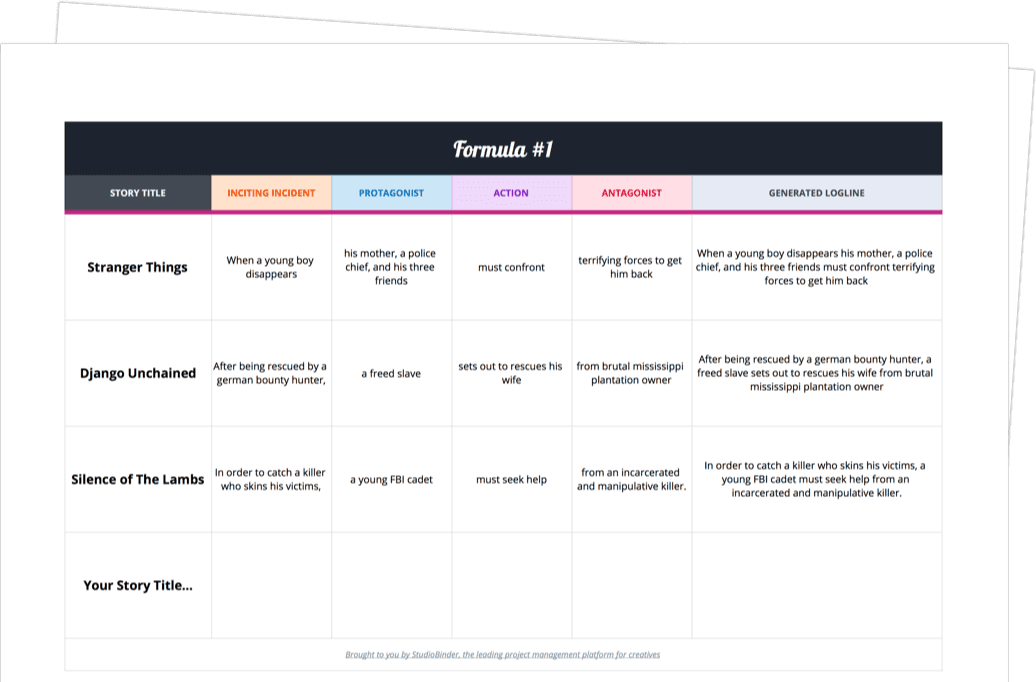We’ll cover what you should put in your logline’s last sentence and why it is important to have one in general. It’s crucial that a good final line leaves readers intrigued and wanting more!
This is a continuation of my blog series on how to write a logline, which is the most important element of your screenplay.
TV SHOW LOGLINES
What Are TV Show Loglines?
A logline is a one-sentence summary of the premise.
TV show loglines provide an overview of what the story of the TV show will be about, and it should pique curiosity without giving away too many details.
Crafting the perfect TV show logline is an art form that distills your script’s essence into a single captivating sentence.
It’s the hook that piques interest and sets the stage for what’s to come.
We’ll guide you through the process of writing loglines that grab attention and don’t let go.
From understanding the core elements to mastering the art of brevity, we’ve got the tips you need to make your TV show irresistible.
Understanding The Importance Of Tv Show Loglines
Creating a standout TV show logline is akin to the concise mastery found within a haiku.
It’s an art form in its own right.
A well-constructed logline reveals the crux of your TV show without giving too much away, enticing the reader to crave more.
The importance of loglines in the filmmaking industry cannot be overstated.
They’re the first point of sale for your screenplay or pilot.
Loglines are the succinct summary that decides whether your script gets noticed or passed over.
Think of some of the most successful TV shows.
Shows like Breaking Bad or Game of Thrones have loglines that immediately intrigue and incite curiosity.
Here’s why these short sentences are critical:
- They convey the unique selling point of your show,
- They demonstrate the narrative drive and central conflict,
- They suggest the genre and tone swiftly and efficiently,
- They are often used in pitch meetings and marketing materials,
- They can make or break writers’ chances in front of executives and agents.
Let’s jump into crafting a logline that captivates anyone who reads it.
A logline must convey the stakes, the protagonist’s plight, and hint at the narrative arc.
What’s at risk?
Who are we rooting for?
And why should we invest our time?
Key elements to consider when writing a logline include the setting, the main character, the conflict, and the stakes.
Always ensure these details are woven together cohesively, offering a snapshot of your story’s essence.
Remember, in the world of TV show production, your logline is the beacon that guides potential viewers toward your narrative shore.
Let’s ensure it shines brightly.
Key Elements To Include In A Tv Show Logline
Crafting an effective TV show logline begins with pinpointing the central elements that showcase your story’s potential.
We must focus on clarity and brevity – honing in on the heart of the narrative with a sharp, succinct pitch that promises a compelling tale.
Character and Conflict play a pivotal role in communicating the essence of your series.
We aim to introduce the protagonist and their primary challenge, encapsulating the struggle that will drive the storyline.
The Setting of your show offers a backdrop that can either be familiar or exotic, but it’s essential in establishing the arena where your drama or comedy will unfold.
We must select a setting that complements the tone and enhances the narrative conflict, whether it’s a bustling city or a remote fantasy world.
A touch of the Tone needs to resonate within the logline, giving a taste of the show’s mood.
Be it dark, humorous, thrilling, or somber, the tone helps set audience expectations and aligns with the genre.
Understanding the Stakes is crucial – the higher the stakes, the more compelling the logline.
We aim to imply what’s at risk if the main character fails in their quest, thereby hooking the viewer with potential outcomes.
An effective logline often incorporates:
- A protagonist with a clear goal,
- The antagonist or primary obstacle,
- An engaging hook that is unique to your story.
Remember, Game of Thrones captured millions with its blend of noble families, deadly intrigue, and a looming supernatural threat, all entwined in a terse yet tantalizing logline.
Similarly, Breaking Bad distilled its complex story into a simple, high-stakes snapshot of a chemistry teacher’s descent into the drug underworld.
Our loglines should eventually promise a journey worth taking, teasing out the threads that will weave into the intricate tapestry of our show’s world.
Crafting that perfect logline takes time and consideration, but it’s a critical step in the journey from pitch to screen.
Crafting A Compelling Tv Show Logline
A riveting logline is a linchpin for getting a TV project off the ground – it’s what hooks a potential viewer, producer, or distributor by boiling down the essence of the show into one or two gripping sentences.
We understand the challenge of distilling an entire series into such a small package yet the rewards for getting it right can catapult a project to success.
The process begins with pinpointing the core conflict of the story.
This involves identifying the protagonist’s main challenge and what’s at stake if they fail, which are compelling elements that will form the backbone of the logline.
We know the importance of highlighting the unique aspects of the show, ensuring that the logline stands out in a sea of pitches.
To aid in crafting this central piece, consider these imperative components –
- The protagonist’s goal – What is the lead character trying to achieve?
- The antagonist or opposing force – What or who stands in the way of the protagonist?
- The stakes – What does the protagonist stand to lose or gain?
- The setting – Where and when does the story take place?
- The genre and tone – Is this a dark comedy or a tense thriller?
Brevity is our best friend when it comes to loglines.
We aim for a tight narrative that ignites curiosity without revealing too much.
Striking the right balance between providing enough detail to entice and leaving room for intrigue is an art form in itself.
A show like Breaking Bad offers a clear blueprint of how a logline can peak interest without exposing the entire plot – a high school chemistry teacher turned methamphetamine manufacturer.
By encapsulating the unique premise and grave stakes, it instantly paints a picture and sets the tone for what’s to come.
We use the same precision and attention to detail when developing our loglines to ensure they grab attention from the initial glance.
The Art Of Brevity In Tv Show Loglines
Crafting a logline for a TV show is an art form – it demands precision and the ability to convey a complex narrative in just a few words.
Our objective is to distill the essence of an entire series into one or two sentences that captivate and intrigue.
The key to brevity lies not only in word count but in the impact of those words.
It’s about choosing language that’s potent and vivid, every word selected serves a purpose, pushing the narrative and hinting at the underlying drama or comedy.
Here are essential elements that ensure brevity and effectiveness in a logline: – Core conflict – distill the primary struggle or challenge – Protagonist’s objective – clarify what drives the main character – Antagonist and stakes – outline what’s standing in the way and why it matters – Unique angle – spotlight what sets your show apart
Consider Breaking Bad as a benchmark for brevity.
Its logline introduces a desperate man’s unusual and dangerous choice to secure his family’s future but leaves us wondering about the costs and the journey.
A logline is the hook, and much like the perfect bait, it should be irresistible and specifically designed for the target.
We select our words to craft an emotional pull, making sure each one counts toward leaving the reader wanting more.
To achieve this, we often employ compelling verbs and evocative descriptors that build a vivid picture with minimal exposition.
This approach isn’t about simplifying the narrative but encapsulating its complexity in a way that’s accessible and enticing.
Our dedication to brevity in loglines isn’t about cutting corners.
It’s about sharpening our focus to what truly matters within the narrative – capturing the intrigue and ensuring that our audience is left with a lasting impression.
Examples Of Effective Tv Show Loglines
Crafting the perfect logline requires a blend of creativity and precision.
We’ll jump into some prominent examples that encapsulate the magic formula of gripping loglines.
The Handmaid’s Tale masterfully conveys its dystopian premise with terse clarity – “In a future where fertility rates have plummeted, a woman is one of many forced into sexual servitude as a last desperate attempt to repopulate the world.
” This logline introduces us to the chilling conflict and stakes that define the series.
Stranger Things similarly sets an evocative scene – “When a young boy vanishes, a small town uncovers a mystery involving secret experiments, terrifying supernatural forces, and one strange little girl.
” We get a sense of the genre, the central enigma, and the uneasy atmosphere that has captivated audiences.
Here are key elements that these examples nail:
- Introducing the central conflict,
- Highlighting the unique setting or twist,
- Touching upon the emotional undertone.
House of Cards presents political drama with a dark undertone – “A ruthless politician will stop at nothing to conquer Washington D.
C.
in this Emmy and Golden Globe-winning political drama.
” We immediately understand the protagonist’s ambition and the high stakes involved.
Creating an impactful logline is all about distilling the essence of the story into the most engaging elements.
It’s not just about what the story is, but about why it matters and how it resonates.

Our loglines must captivate, intrigue, and promise a journey worth taking.
How To Write Tv Show Loglines – Wrap Up
We’ve explored the art of crafting a TV show logline that captures attention and conveys the heart of a story.
Remember, it’s all about distillation—boiling down your complex narrative to its most intriguing core.
By focusing on the central conflict, unique elements, and emotional resonance, we can promise audiences an adventure they won’t want to miss.
Let’s take these insights and create loglines that stand out in the bustling entertainment landscape.
After all, our stories deserve to be seen—and it starts with a logline that leaves them wanting more.
Frequently Asked Questions
What Is A Tv Show Logline?
A TV show logline is a brief, one or two sentence summary of a television show that highlights its central premise, conflict, and hook to spark interest from viewers, producers, or distributors.
Why Is A Logline Important For A Tv Show?
A logline is critical for a TV show as it serves as the first impression for potential viewers and industry professionals.
It aims to capture the essence of the show and entice people to engage with the content.
Can You Provide Examples Of Successful Tv Show Loglines?
Successful TV show loglines include “The Handmaid’s Tale,” which could be summarized as “In a dystopian future, women are subjugated by an oppressive regime, and one must survive and fight back,” and “Stranger Things,” summarized as “When a boy disappears, a small town uncovers a mystery involving secret experiments, terrifying supernatural forces, and one strange little girl.
“
What Are Key Elements Of An Effective Logline?
Effective loglines typically introduce the show’s central conflict, set up the unique world or twist of the story, and convey the emotional tone or stakes that will draw audiences into the show’s journey.
How Can I Create An Impactful Logline For My Tv Show?
Creating an impactful logline involves distilling the story down to its most compelling elements.
Focus on the conflict, the unique aspects of the setting or characters, and the emotional journey to promise a worthwhile and intriguing experience for your audience.






